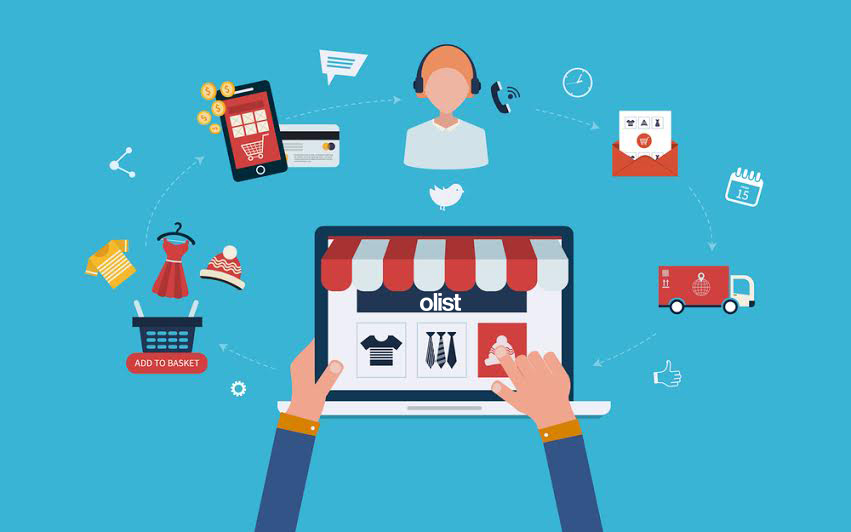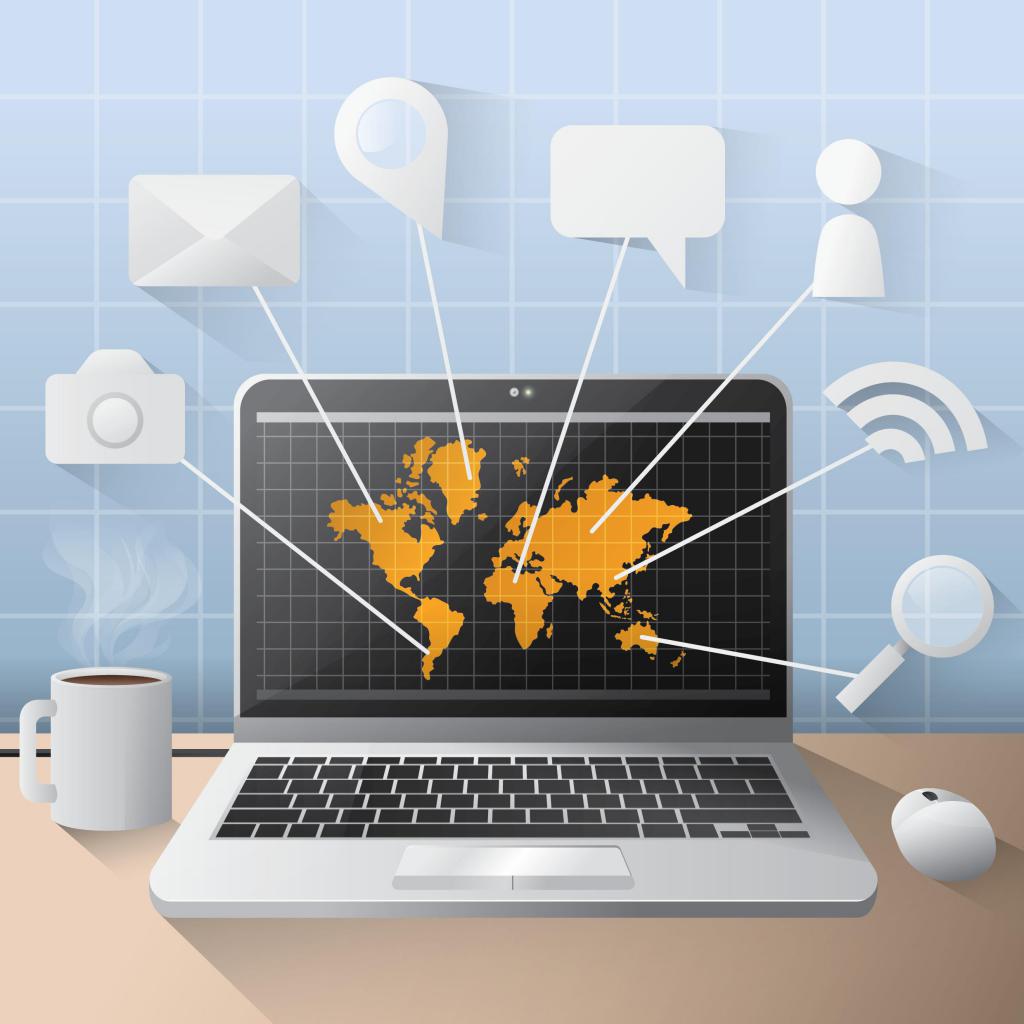What are these CRM systems, and what are they famous for in today's business environment? Customer Relationship Management (CRM) systems help you better understand the needs of your customers and how to satisfy these desires, while increasing business efficiency. CRM systems link customer information from a variety of sources, including email, websites, shops, call centers, mobile phone sales, and marketing and advertising efforts. CRM data flows between operating systems (such as sales and inventory systems) and analytic data sort data for templates.
What is a CRM system
You do not have an accurate idea of who your customers are and what their needs or desires are? Would you like to know about them if you were introduced to the course in advance that you could lose them? This is what CRM systems are for. What is it and how they work, we learn further.
They have many technological components, and programs should be seen as a strategic process to better understand and satisfy customer needs. A successful strategy depends on combining a large amount of information about market trends in order to more effectively offer and sell your products and services.
Thanks to an effective strategy, a business can increase revenues:
- By providing services and products that are exactly what your customers want;
- offering the best customer service;
- due to more efficient sales of products;
- Helping employees close deals faster
- retaining existing customers and attracting new ones.
These revenues do not increase with the purchase of software and the introduction of a CRM system. For CRM to be truly effective, an organization must first understand who its customers are, what their values, needs are, and how best to satisfy them all. For example, many financial institutions monitor the life stages of clients in order to bring to the market appropriate banking products, such as mortgages, at the right time.
5 keys to a successful CRM system implementation

Develop a customer-oriented strategy first before considering which technology you need to attract. Divide your CRM into manageable parts by setting long-term and short-term milestones over the program. Start with a simple project that covers all the necessary departments.
Make sure your plans include a scalable architecture structure.
Think about what works best for the enterprise: a solution that bundles “best of breed” software from multiple vendors through web services or an integrated software package from a single vendor.
Do not underestimate how much data you can collect, but make sure that if you need to expand the system, you can do it. Be aware of what parts are collected and stored.The impulse of all strategies will be to capture and then save every piece of data that you can. Storing useless data consumes time and money, and you need to understand what CRM systems are and what it will bring in the future.
Next, the organization should learn all the different ways to inform customers about the business. For example, one company can interact with customers in several ways, including email, websites, shops, etc. CRM systems connect each of these points.
Analysts can then examine the information to get a holistic view of each consumer and identify areas where better services are needed.
For example, if someone has a mortgage, a commercial loan, the bank should treat this person well every time he has any contact with him.
How long does it take to install a CRM system in a company
If you plan to use the software for a specific department, such as a sales department, the implementation should be relatively quick - perhaps 30-90 days. However, if you work through an application or a package with the acquisition of software licenses, the implementation and training process will take months, if not years. The time taken to create a well-designed CRM project depends on its complexity and components, as well as on how well you manage the project.
How much does a CRM system cost?

A sales automation application can cost from 65 to 150 dollars per month for a basic package. If you need more sophisticated functionality and a level of support, you pay more. A corporate package can cost from several thousand to millions of dollars, depending on how many features you buy and how many computers or “places” have access to the software.
For example, one company or department may purchase an application for managing email marketing or sales automation, while a larger company will want to purchase an integrated package that includes a database, as well as applications for marketing, sales and customer service and support (via call centers and online). It is obvious that the integrated software package is much more expensive, since the CRM management system will include a full range of capabilities.
Cloud CRM vs. Local
The CRM market has grown especially among small and medium-sized companies, mainly due to concerns about costs and the complexity of large-scale implementation of programs in place. Indeed, a CRM management system is a good choice for companies that want to implement standard processes. They can use off-the-shelf data structures with little internal IT support that do not require complex real-time integration with back-office systems.
However, software is not always as simple as it sounds. For example, customization can be problematic, and hosted vendor API tools cannot provide the degree of integration that is possible with local installation applications. Implementing a working system should not take as much time as a traditional software package would require. In addition, some companies with particularly sensitive customer data, such as those in financial services and healthcare, may not want to give up control of their data by third parties for security reasons.
The greatest profit is obtained from the coordination of business strategies, CRM and IT solutions in all departments. In fact, it is best for business units to use applications to take responsibility for the project, and IT will play an important advisory role.
What makes CRM projects fail

From the very beginning, the lack of communication between everyone in the customer relationship chain can lead to an incomplete picture of the client’s interpretation.Poor communication can lead to the introduction of technology without proper support. For example, if sellers do not fully disclose the benefits of the software, they cannot enter the demographic data that is necessary for the success of the business. In general, you need to always prove to the directors that the software is necessary, and to the CRM-system - that this is the correct operation setting. Then the crashes will stop, and conflicting programs will be fixed.
Best Business Systems
CRM software is available in many forms, but the goal is almost universal: increase sales, increase productivity and identify more qualified prospects for marketing activities. Companies that correctly integrate CRM systems for business receive valuable information by capturing and collating data on consumer behavior in one interface. In today's competitive landscape, finding the right supplier can make the difference between growth and recession.
Given the vital contribution made by the best CRM systems, success can be much easier. Businesses may be overwhelmed by the choices available to them, and there are many considerations that should determine the selection process by criteria. Nevertheless, small and medium-sized companies meet their most important needs with a free, open source application. After evaluating the strengths and weaknesses, having studied the reviews of industry leaders and analyzing the ratings of CRM systems of various research firms, we selected the following applications:
- Apptivo - This is a cloud-based CRM that includes functions for organizing contacts, project management and tracking financial transactions. The free version is limited to three users and a memory capacity of 500 MB. Key features of the free version include tools for managing sales, contacts, opportunities and potential deals. Apptivo users also use project management tools, including billing, work orders, valuations, and purchase orders. The free version includes standard reporting, search functions, and automatic notification of tasks and appointments. Third-party integrations are available in paid versions that start at $ 8 per month for each user. Apptivo also offers apps for Android and iOS devices.
- Bitrix24 is a reliable CRM option for organizations looking for a set of tools designed for project management, collaboration and support of marketing efforts. The free version of Bitrix24 is limited to 12 users and 5 GB of data storage. Bitrix is designed to bring most business operations to one platform. Key features of cloud-based CRM include project management tools such as content sharing, messaging, time management, tasks, and streaming communications in a social-style environment. Automated processes for CRM system functions, such as notifications, supporting reports, and group or discussion subscriptions, can help companies track progress and plan upcoming opportunities with more context. Opportunities can be enhanced through third-party integrations, and more productive features cost from $ 39 per month for 24 users. Bitrix24 offers apps for Android and iOS devices.
- Hubspot CRM - This is a full-featured flexible solution that includes all the basic functions of a modern CRM system, examples of which include contact management, tracking potential customers and closing deals. Hubspot is popular with many small businesses because it offers enough features and functionality to improve zero-cost marketing and sales operations.The free version of Hubspot includes an unlimited number of users, a data warehouse of up to 1 million contacts with no time limits or advertising periods. Hubspot's contact and leadership management tools allow users to instantly collect valuable information about any company listed in the database, including staff and social profiles.

The software is designed to manage the entire sales pipeline, so it automatically tracks interaction with consumers via email, social networks, phone calls and meetings. The cloud platform is equipped with an intuitive dashboard with real-time reports on management quality, and users can create optimized landing pages to attract more valuable potential customers. This client CRM system addition includes additional paid options. Hubspot can be configured by integrating third-party services from Google, Microsoft and many others. It is also available for Android and iOS devices, with more advanced features starting at $ 50 per user per month.
Simple and outstanding development for large companies
We should also consider the Insightly system. This is a CRM platform designed to manage contacts, sales and projects of the organization, but the free version is limited to two users, 2500 contacts and 200 MB of data storage. The cloud program provides users with a detailed overview of their contacts, including the background, interaction history, important dates and other information related to tasks or sales opportunities. Key Insightly features include task management tools that allow users to track progress by deadlines, create milestones and tasks, set automatic alerts and track correspondence.
Here you can also monitor emails, automatically create social network accounts of any contact and your own reporting documents and charts to give organizations a more detailed view of their interaction with customers. Users can expand their capabilities by integrating with various third-party services, but some options are available only for customers who upgrade to a paid package. Extended plans start at $ 29 per user per month.

Insightly also offers apps for Android and iOS devices. It was the world's largest open CRM on the market, but the company no longer releases new versions. Nevertheless, Insightly is still available for download and is aimed at developers of large sales complexes. The main customers are corporations, where any accounting is carried out automatically.
Advanced systems of analysis and accounting of business strategies
SuiteCRM is a free, open source, stand-alone alternative to SugarCRM that continues to grow with new features and ongoing support. It is the most popular software in the world, with more than 4 million users, 800,000 downloads and a community of developers of 87,000 members. SuiteCRM's core CRM systems include self-service portals, which provide organizations with a unique method of interactive customer support. Users can also create models of sales pipelines, conduct flexible modeling of business processes, manage contracts and create templates for customer quotes.
SuiteCRM, compared to other types of CRM systems, includes a ROI calculator and a robust email campaign module that allows organizations to design, analyze and track tasks in a single dashboard. Some of the outstanding features include a large selection of third-party integrations, advanced analytics and forecasting, real-time notifications, and comprehensive project management tools for potential customers.

Users can customize their platform by synchronizing with third-party services using the Zoho API. Zoho CRM is a cloud platform offering applications for Android and iOS devices. Additional and more advanced features cost from $ 12 per user per month. Such an interesting rating of CRM systems is made up by studying the main advantages of all software.
When does the system require a full reboot?
Given the reality of resources, when does it make sense to update a CRM solution? Here are a few signs that you need to improve your CRM system to get better results. Surprisingly, technical problems are not always the most important cause.
- Your internal CRM is fragile and consumes company resources. Different CRM products have become commonplace, and many firms have developed their own CRM solutions. But the growth of strong offers and the need to be flexible is a "hole" for those who want to get everything simple in one purchase.
- The new sales guide has new CRM priorities. Analysis of CRM systems has shown that personnel changes, especially at the executive level, often accelerate the need to replace software data.
- Standard reports take several days to create from scratch. This is not critical, but as soon as you need to make an annual report, resources fall, the system is overloaded. It is necessary to “save” template forms to restore some indicators.
- CRM management is absent or ineffective. For a larger business, running a system quickly becomes a second job. Some organizations restrict access to certain employees due to the incompetence of employees.

Problems are not the only reason to invest in CRM capital services. New data resources may provide other capabilities, and sometimes CRM needs to be updated to take advantage of the use of CRM systems in the new mode. Thus, management will be able to reach a new level of income, reducing costs and time. And this is the most precious resource that cannot be exchanged for any finances.









